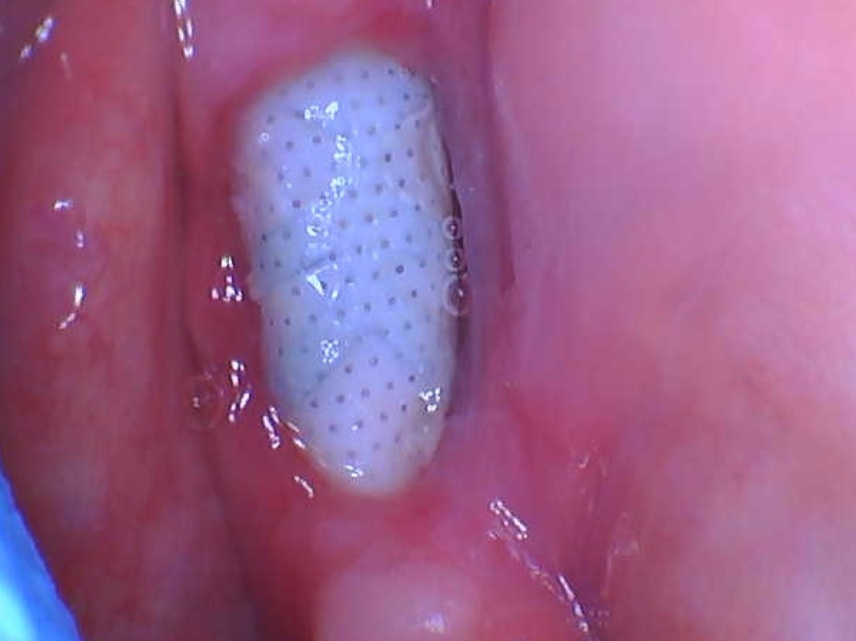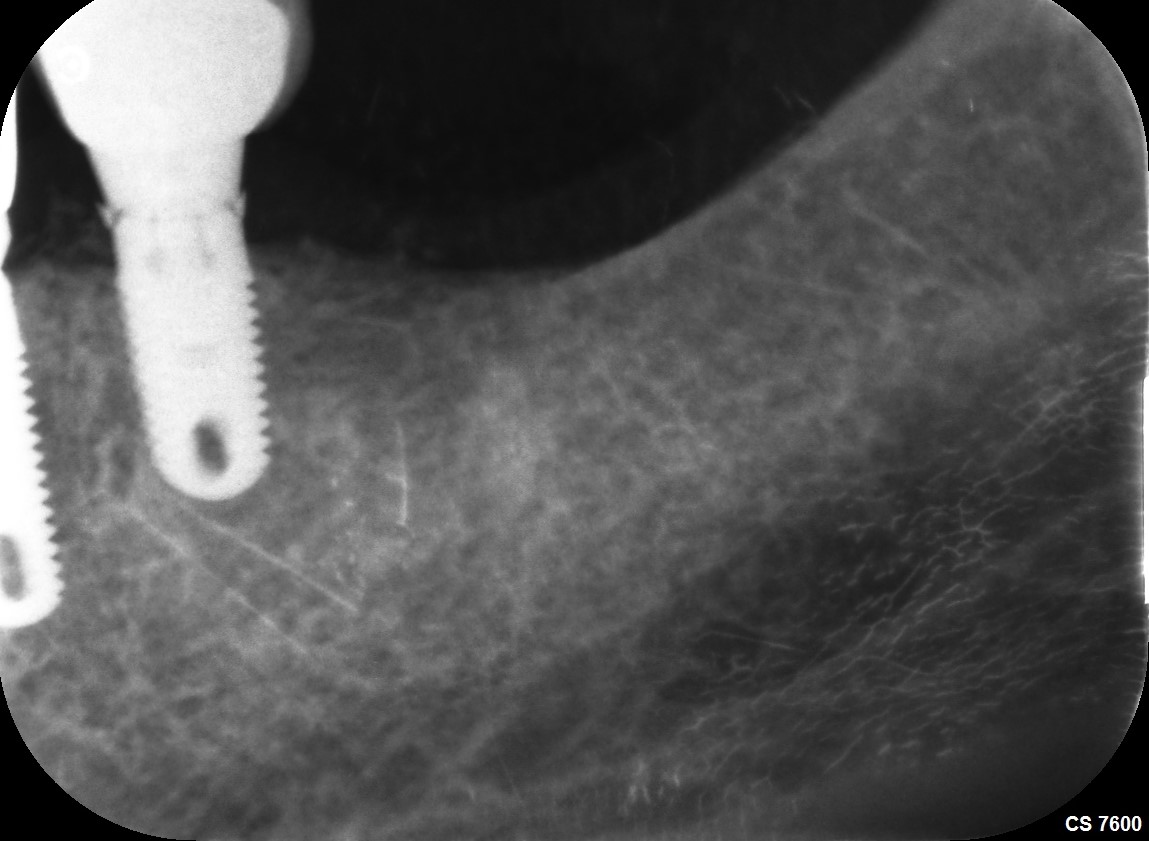We have been doing a lot of these over the last three years, so much so it is now relatively routine, and I am pleased to say, successful. The one thing I would not attempt to do is to place the implant down the palatal root space, it's often quite angled and outer bone plate can be quite thin.
The problem with maxillary molars is that the labial and palatal bone about the residual roots is thin, often fenestrated and receded as well. It’s no wonder there is so much collapse of the alveolus following the extraction.
It’s possible to fill the root spaces with bone graft following the extraction and this is the key to an effective Socket Regeneration procedure. The question then comes to be one of whether it is possible to place an implant at the same time. The key to success lies in whether the implant can be stabilized adequately in the residual bone.
When the tooth is removed, which we do by removing each root individually, a triangular core of bone can generally be seen in the central part of the socket, this is supported on webs of bone from the adjacent sockets. Often it’s possible to generate a starter channel down into this central core with an ultrasonic instrument or a trephine. Care has to be taken because the central core can be very shallow. Generally we get through the cortical bone to some softer cancellous bone. This can be expanded outwards and upwards with osteotomes. Usually, this will be the start of a Sinus Lift as well. Once we know we are into the sinus, we add bone graft into the region and then osteotome this up by hand. It’s possible to get good stability in a relatively small amount of bone because the outer rim of the region is cortical bone.
Then it is a matter of placing the implant. We use a tapered system which does not have an aggressive thread pattern. The platform of the implant is placed down below the surrounding bone line. We place a 4.0mm gingivaformer in the implant and then bring additional bone graft up and around that gingivaformer. We cover the graft, implant and region with a thicker and tougher membrane than usual.
Instead of two or three surgical procedures (extraction + socket regeneration, Implant placement 3 - 6months later, second stage exposure finally) this is all done in a single procedure. You can get Primary Stability for the implant in the web of bone and in the sinus floor. Secondary Stability comes with healing in the Socket Regeneration region. We never place a provisional restoration at the outset as this would break the Primary Stability. Usually these can be restored in 4-6 months.
OsseoNews
1/16/2019
Very informative. Thanks. Can you post a case, by any chance? https://www.osseonews.com/post-case-photos-and-get-feedback/

















